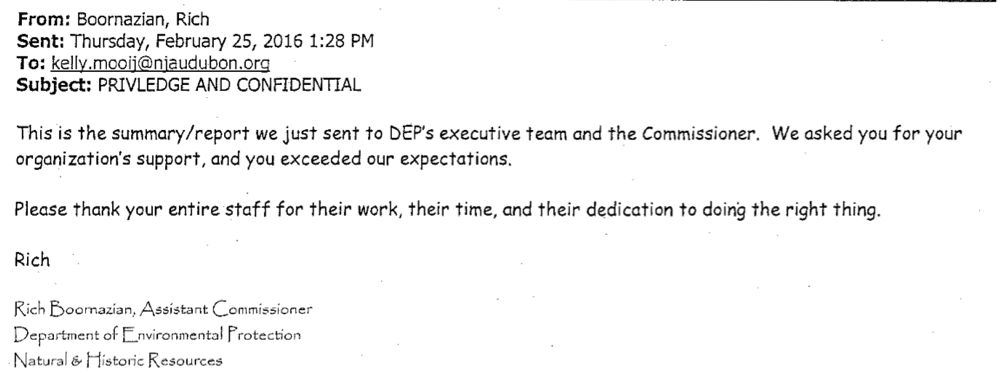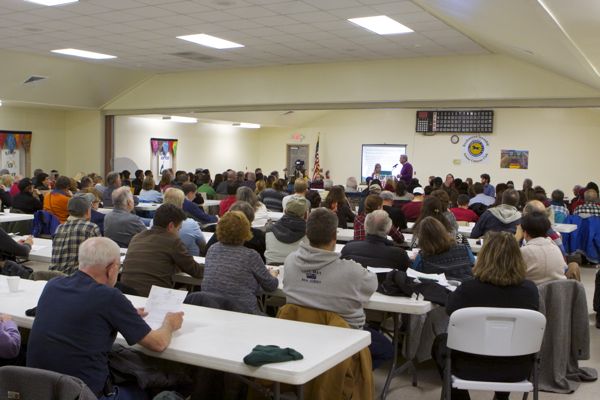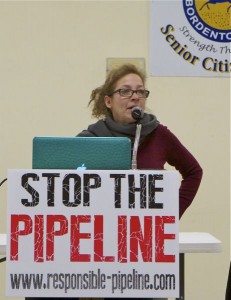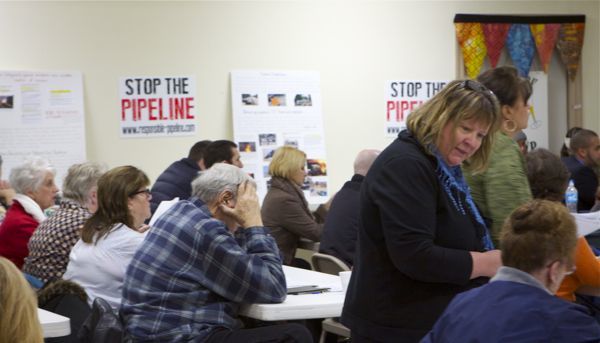Inside Christie DEP Commissioner Bob Martin’s Management Bubble of True Believers (or Cynical Bastards)
Read DEP’s “PRIVLEDGE (sic) AND CONFIDENTIAL” Management Report On Sparta Mt.
Scandalous incompetence and manipulation of the public
DEP says that NJ Audubon’s support “exceeded our expectations”
The Christie DEP recently proposed an incredibly unpopular plan to log the Sparta Mountain Wildlife Management Area (SMWMA), a magnificent 3,400 acre forested tract in the heart of the NJ Highlands Preservation Area. The land was purchased by Green Acres funds for permanent preservation.
Not surprisingly, that DEP plan immediately was met by strong public outrage and opposition, including objections by conservation groups and local governments and nearby Lake Homeowners’ associations, who all were blindsided by the DEP proposal.
One of the first big public expressions of this outrage and opposition occurred in Hardyston Township.
I filed OPRA public records requests for communications between DEP managers and NJ Audubon, who prepared the SMWMA logging plan.
The internal DEP email and management report I got back is an embarrassment.
And it raises serious issues about the “symbiotic” relationship between DEP and NJ Audubon.
It is incredibly revealing of how the Martin team thinks inside their bubble, how they circle the wagons, and how they engage in fact free spin.
Read this memo below and note how they characterize and dismiss criticism as “emotionally charged” and attack critics as manufacturing “illusions”.
This DEP “management report” illustrates just how technically incompetent, petty, and political the Martin management team is and how they rely on fact free PR tactics and desperately seek the political cover provided by NJ Audubon.
Is there one fact or even an attempt at a scientific analysis that you would expect in a Report to the DEP Commissioner in response to strong public criticism of a logging plan in a Highlands forest?
Believe me, I’ve written and read many memos and reports to the DEP Commissioner and this one is a new low. In fact, I’ve never read a memo to the Commissioner this transparently craven, political, and fact free, even from the DEP press office whose job it was to present the political arguments and media aspects of any public controversy.
These Martin people are pathetically incompetent and totally unprofessional – I’ve previously criticized DEP Assistant Commissioner Boornazian as an incompetent hack, but in this case his own words prove the point.
So, for your reading pleasure, in full, here is how the Bob Martin DEP Management Team responded to public opposition of hundreds of people in Hardyston township.
Note especially the symbiotic relationship between DEP and NJ Audubon and how manipulative DEP was in political deployment of NJ Audubon, a group that DEP just gave $500,000 of open space funds to for a conservation easement of about 70 acres of already preserved land (think about that, while townships across the state go begging of scarce open space money).
Also recall that NJ Audubon received $140,000 from a billionaire elite private hunting group to develop the logging plan, which was written by a private forester paid by NJ Audubon:
Report on SMWMA Forest Management Plan Meeting in Hardyston Twp.
Summary:
It was a challenging environment but the DEP F&W staff that attended did a great job in presenting the Sparta Mountain Wildlife Management Area (WMA) Forest Stewardship Plan and responding professionally and accurately to questions and concerns posed by the Township Council and the residents and attendees. In particular, Dave Golden did a masterful job of presenting the plan and taking questions for nearly 4 hours thereafter to better inform and enlighten the audience on the details of the plan and how the plan would likely affect the WMA and the surrounding communities. Support from NJ Audubon (NJA) and NJ Outdoors Alliance was present during the Q&A period.
We suggest that the comment period be extended for another 30 days to March 31, 2016 due to the attention shown at this and other meetings. After the close of the comment period, DEP will hold the final public meeting in Sussex County at a facility that can handle up to 400 people when the final plan is ready for release.
Background:
The forum was attended by 175 -200 people throughout the evening. Bruce Scruton from the NJ Herald was in attendance for the entire event and a civilian from Sierra Club was on hand and recorded most of the evening. In attendance from DEP was Cindy Randazzo, Robin Madden, Rob Geist, Dave Golden, Sharon Petzinger, and Larry Herrighty and from NJ Audubon was John Cecil and their forester Jeremy Caggiano.
The Hardyston meeting was a long and challenging night for all who attended. There were more than 50 speakers who signed up with the Township to speak and the vast majority was from the municipality but some were summer or non-resident citizens who live on or near the lakes in the area. There were about 15 speakers from outside the area.
It was no surprise that most of the comments from the community were related to concerns about the emotionally charged issues of the size and scope of the tree logging and possible impacts on water quality for the lakes and the wells in the area. Many of these questioners were framing the issue as large scale logging operations with dozens of workers in the WMA, many large logging trucks traveling through their small communities frequently and the threats to erosion, sediment in lakes and even damages to the road infrastructure and to the safety of children playing on local roads. These questions of size and scope will be fully addressed by DEP and NJA and countered to combat the popular illusion being manufactured by the opposition.
We had a few expert supporters, including NJOA and the NJ Sportsmen’s Federation and a few professionally educated foresters on hand to provide welcome positive comments and support for the plan and the science behind it. The Township Council is unlikely to endorse our plan at this time, but after the meeting adjourned, we had a productive conversation with the township manager. Providing additional facts to counter the popular illusions and misinformation may help convince the Council of the soundness of the plan but this is an uphill climb.
We on multiple occasions, apologized for our missteps on prior notification in the 2012 period and pledged to improve our notifications to our governing bodies going forward. The positive effect of the prior meetings and notifications for local government was seen in the reactions of the Jefferson Twp. Council at a similar non-public meeting earlier in the day.
We believe it is prudent to extend the public comment period by 30 days and would seek approval for this to be announced ASAP well before the current March 1 deadline.
We need to compliment Dave Golden, Sharon Petzinger and the NJA on their tireless professionalism during this marathon meeting. Dave was truly incredible last night handling an emotionally charged audience and at times they even complimented his demeanor. John Cecil and his staff person were extremely forthright and professional. Finally, Sharon who is truly a passionate and controlled professional had to grin and bear a chorus of inaccurate statements on her species knowledge and expertise but in no surprise, she handled herself professionally.
Lastly, the perception of DEP by many attendees in the room and some on Council is one that we all know – Trenton coming into a community and doing what it wants without regard to local sentiments. While these charges are not new, they are corrosive and feed into a greater nationwide sentiment against government and public servants that they do not listen or care about local concerns. The fact that our team spent 4+ hours listening to and soliciting comments and concerns about this plan belies this popular preconception, but we do not expect credit from the public for doing this. We are committed to our Department’s vision of service to the people of this state, the stalwart stewardship of our lands, air and water, and unblinking commitment to finding the facts and using the best science available to allow us to accomplish those goals in an appropriate and effective way. Last night was an example of those values on display and it was a credit to the entire Department.





